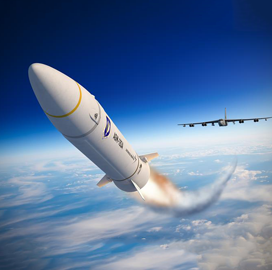The National Security Commission on AI (NSCAI), composed of experts that are chaired by former Google chief executive officer, Eric Schmidt, released a report that addressed the national posture for the artificial intelligence (AI) era. The report found that the U.S. is underprepared for the AI race, stating that China could potentially replace the U.S. as the world’s “AI superpower.”
Additionally, the AI commission noted that this era could pose military implications. “America is not prepared to defend or compete in the AI era,” wrote Schmidt and vice chair Bob Work, former deputy U.S. secretary of Defense and two-time Wash100 Award recipient. “This is the tough reality we must face.”
Schmidt and Work added that the report presents a “strategy to defend against AI threats, responsibly employ AI for national security, and win the broader technology competition for the sake of our prosperity, security, and welfare.” They said that AI systems will be used in the “pursuit of power.”
The National Security Commission on AI has recommended that President Biden reject bans on AI-powered autonomous weapons, adding that adversaries are unlikely to uphold treaties. “We will not be able to defend against AI-enabled threats without ubiquitous AI capabilities and new warfighting paradigms,” Schmidt and Work wrote.
Previously, China has stated that it will strive to be a global leader in AI by 2030. The National Security Commission on AI noted that it is vital that the U.S. works to eliminate that possibility. They added that China’s domestic use of AI is “a chilling precedent for anyone around the world who cherishes individual liberty.”
“We must win the AI competition that is intensifying strategic competition with China,” said Schmidt and Work. “China’s plans, resources, and progress should concern all Americans. We take seriously China’s ambition to surpass the United States as the world’s AI leader within a decade.”
The commission has called on the U.S. government to more than double its AI research and development spending to $32 billion a year by 2026. It also suggests establishing a new body to drive wider AI policies, relaxing immigration laws for talented AI experts, creating a new university to train digitally skilled civil servants and accelerating the adoption of new technologies by U.S. intelligence agencies.

The Potomac Officers Club's third annual Artificial Intelligence Summit on March 30 will feature Yll Bajraktari, executive director of NSCAI, as a keynote speaker to discuss how to advance AI and the critical role of private-public partnerships in maintaining the competitive advantage within the technology race. To register for the summit, visit Potomac Officers Club’s Event Page.




